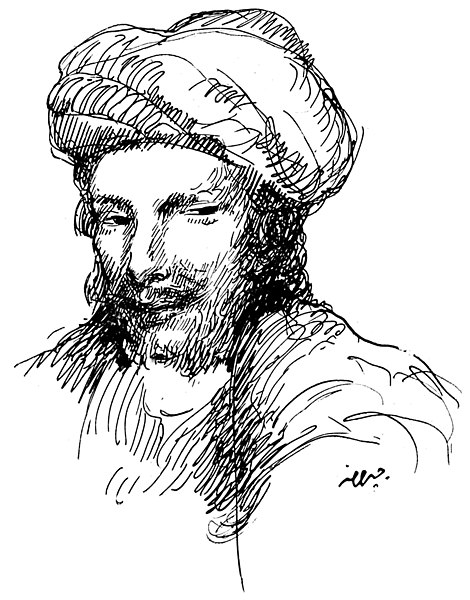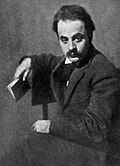پەڕگە:Abu Nuwas.jpg

قەبارەی ئەم پێشبینینە: ٤٧٠ لە ٦٠٠ پیکسەڵ. ڕێزەلووشنەکانی تر: ١٨٨ لە ٢٤٠ پیکسەڵ | ٣٧٦ لە ٤٨٠ پیکسەڵ | ٨٣٣ لە ١٬٠٦٣ پیکسەڵ.
پەڕگەی سەرەکی (٨٣٣ × ١٬٠٦٣ پیکسڵ، قەبارەی پەڕگە: ٣٢٣ کیلۆبایت، جۆری ئێم ئای ئێم ئی: image/jpeg)
مێژووی پەڕگە
کرتە بکە لەسەر یەکێک لە ڕێکەوت/کاتەکان بۆ بینینی پەڕگەکە بەو شێوەی لەو کاتەدا بووە.
| ڕێکەوت/کات | ھێما | ئەندازە | بەکارھێنەر | تێبینی | |
|---|---|---|---|---|---|
| هەنووکە | ٢٠:١٧، ٧ی ئابی ٢٠١٩ |  | ٨٣٣ لە ١٬٠٦٣ (٣٢٣ کیلۆبایت) | FunkMonk | Bigger. |
| ١١:١٤، ٢ی ئابی ٢٠٠٨ |  | ٢٤٢ لە ٣٠٥ (٣٦ کیلۆبایت) | FunkMonk | {{Information |Description=Abu Nuwas, Drawing by Kahlil Gibran al-Funun 2, no. 1 (June 1916) |Source=http://www.al-funun.org/al-funun/images/index.html |Date=June 1916 |Author=Kahlil Gibran |Permission= |other_versions= }} {{ImageUpload|basic}} |
بەکارھێنانی پەڕگە
ئەم پەڕەیە ئەم پەڕگەیە بەکار دەھێنێت:
بەکارھێنانی سەرانسەریی پەڕگە
ئەم ویکیانەی دیکەی خوارەوەش ئەم پەڕگە بەکاردێنن:
- بەکارھێنان لە af.wikipedia.org
- بەکارھێنان لە als.wikipedia.org
- بەکارھێنان لە alt.wikipedia.org
- بەکارھێنان لە an.wikipedia.org
- بەکارھێنان لە ar.wikipedia.org
- بەکارھێنان لە ar.wikiquote.org
- بەکارھێنان لە ar.wikisource.org
- بەکارھێنان لە arz.wikipedia.org
- بەکارھێنان لە ast.wikipedia.org
- بەکارھێنان لە av.wikipedia.org
- بەکارھێنان لە azb.wikipedia.org
- بەکارھێنان لە az.wikipedia.org
- بەکارھێنان لە bat-smg.wikipedia.org
- بەکارھێنان لە ba.wikipedia.org
- بەکارھێنان لە be-tarask.wikipedia.org
- بەکارھێنان لە be.wikipedia.org
- بەکارھێنان لە bg.wikipedia.org
- بەکارھێنان لە bi.wikipedia.org
- بەکارھێنان لە bjn.wikipedia.org
- بەکارھێنان لە bn.wikipedia.org
- بەکارھێنان لە br.wikipedia.org
- بەکارھێنان لە bs.wikipedia.org
- بەکارھێنان لە bxr.wikipedia.org
- بەکارھێنان لە ca.wikipedia.org
- بەکارھێنان لە ce.wikipedia.org
- بەکارھێنان لە co.wikipedia.org
- بەکارھێنان لە cs.wikipedia.org
- بەکارھێنان لە cy.wikipedia.org
- بەکارھێنان لە da.wikipedia.org
- بەکارھێنان لە de.wikipedia.org
- بەکارھێنان لە el.wikipedia.org
- بەکارھێنان لە en.wikipedia.org
بینینی بەکارھێنانی گشتی زیاتری ئەم پەڕگەیە.

